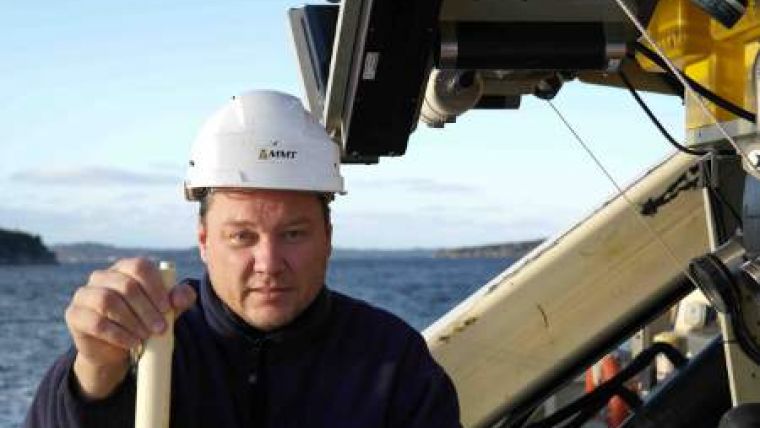Development of New Technologies in Marine Archaeology
A Swedish research foundation has granted MARIS at Södertörn University, Sweden, funds to develop non-intrusive methods for deep water archaeology together with MMT. The project focuses on developing new technologies and methods for documentation and identification of complex and inaccessible archaeological remains beneath the surface.
For the project, a Blue View high-frequency scanner is to be placed on the sea floor. The scanner is particularly useful on wrecks in deep water where diving is difficult and complicated. These are the conditions in the newly discovered and spectacular wrecks Mars (from 1564) and the Sword (from 1676). These two wrecks lie on the bottom of the sea by the island of Öland, Sweden. By putting the transmitter in a wreck, for example, a detailed documentation of the hull of a wreck can be done in short time and with very high accuracy, explains Joakim Holmlund, PhD physicist, project manager at MMT and MARIS employee.
There is often one problem with the archaeological remains in the Baltic Sea: the remains are covered with thick layers of sediment. This may explain why so few really old prehistoric archaeological remains have been found so far. To remedy this, new methods are needed to access the buried objects with higher resolution than normal sub-bottom profilers. One type of equipment that could be used for this purpose is a synthetic aperture sub-bottom profiler called 'Buried Object Sonar System' (BOSS). By using the BOSS method, the marine archaeologists can to see three-dimensional images of objects under the surface. This technique might even allow Baltic boats from the Bronze Age and the Stone Age to be found in the future.
Professor Johan Rönnby, who leads the work at MARIS, Södertörn University, is delighted with the new allocation, saying that all archaeologies, both onshore and offshore, are a combination of humanistic interpretation and practical knowledge of the source material. The new equipment and cooperation with MMT provides MARIS with new opportunities to both find and reconstruct discoveries and whole environments submerged.
Swedish marine archaeological research has a very good reputation internationally and Sweden is considered one of the leading countries in this field. Södertörn University's archaeological research department MARIS plays a central role in the scientific development of the field.
An important part of the development of this subject is new methods for underwater archeology. Search, mapping and underwater excavating requires special techniques and special skills. This is particularly evident in the case of examining the remains of the great depths. Instead of using cutting spoon, ruler and tape measure, MARIS uses underwater robots, multibeam and other subsea survey technologies. The MARIS and MMTS research and development activities for these technologies and methods have attracted international attention in various marine archeological projects.
Image: Joakim Holmlund, PhD physicists, Project Manager at MMT and works at MARIS.














